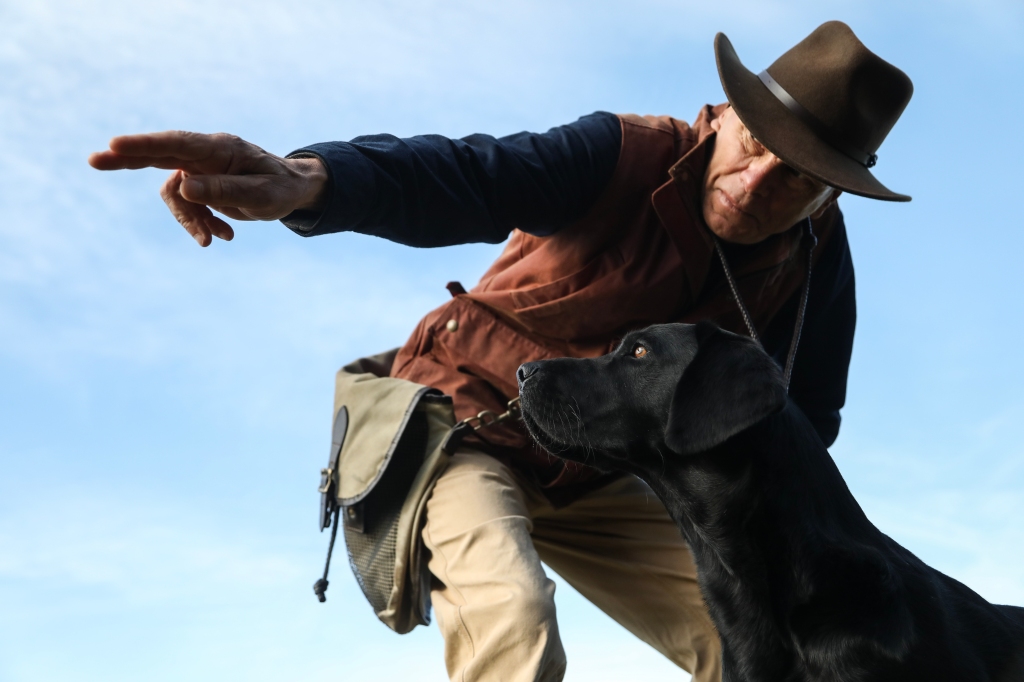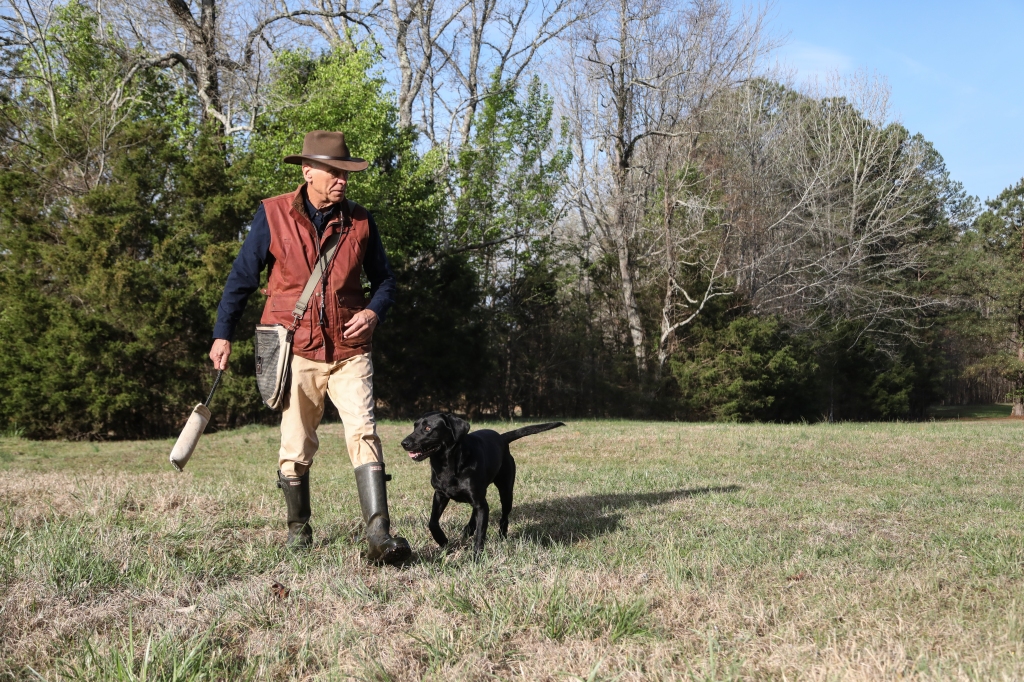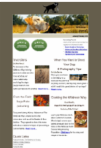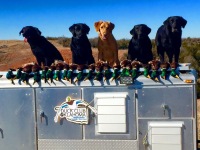By Mike Stewart, Wildrose International
Photos and Diagram by Katie Behnke

Spring training for retrievers is here! Time to prep for the upcoming wingshooting season. It’s never too early to start honing skills that will transfer well to the hunt. It’s the same as a college football team conducting spring training and scrimmaging in preparation for fall game days. Prepping for proficiency matters.
To begin, let’s consider the main mission of our retriever on a hunt – from game recovery to bringing back birds that would otherwise be lost. Then think about how to retrieve multiple falls or more than one bird down. The Wildrose Way is this:
Distance – the longest bird down first, then work to the closest
Time – the first and oldest bird down to the most recent fall
The order of recovery is the best way to prevent game losses: drifters, wounded swimmers, not recalling where the bird fell, etc. Now, the gundogs may have another opinion. They see the closer birds and may be locked in on that location or even influenced by old falls or distractors. We need to train our hunting partners to trust us, as handlers, while ignoring their initial interpretation of the situation and trust that we will put them on the appropriate bird. “Go where directed and you will be rewarded.” This trust is established well before game day through field training. Trust, then respect.
We want to train to the point of being able to redirect our retriever’s attention away from shorter birds or distractions such as decoys, spinners, or old falls and take a direct line to recover the distant birds that are down as quickly as possible.
The Drills
To prepare, one excellent exercise is explained on page 173 of Sporting Dogs and Retriever Training, the Wildrose Way called the Inline Woodland Triple. To set up a long bird/short bird down challenge, simply modify this known pattern which uses memories placed at fixed reference points. Set up a circle memory with 3 bumpers down.

Instead of standing in the center of the pattern, move to the extreme left or right of one of the outside memories which sets up two bumpers that the dog must line past to pick the longest placement. Pick the bumpers 3, 2, 1…the longest to the shortest then invert and run the drill in the opposite direction. This is a long bird/short bird setup.
The Slider
With the dog at heel, the handler walks in a straight line across a field of short grass or bare ground. Place seen memories using large white bumpers all in a straight line 12 to 15 yards apart. Begin with 3 bumpers then advance to 4.

After the last bumper is dropped, you should have a line of obvious bumpers all in a row. Walk past the third bumper placed (last one down) to begin the drill. The objective is to line the dog past the shorter 2 bumpers to recover the longest (first one placed). Set the line for the dog as close to the bumpers as possible given the dog’s level of ability. As success is achieved, a tighter, closer line may be accomplished. With proper alignment, the dog may well see the longest bumper and that’s ok. The objective is for the dog to take the indicated line and ignore the shorter bumpers: a direct line to the correct bumper with no suction to the closer ones or switching.

Making the Pick
Select which side of the lined bumpers to set the dog up on.
- You, the handler, are between the dog and the bumpers. This is a bit easier.
- The dog is between you on one side and the line of bumpers on their other side. Now, you have a bit more suction for the dog to deal with.
Redirect the dog’s attention away from the closer bumpers with the command “no.” Take two short steps forward to set up the dog’s alignment to the longest bumper. Make sure the tail, spine, and nose are aligned in the desired direction, then your arm extends. The objective is for the dog to focus attention forward afield to establish his/her line toward the longest target.

Pick each memory in descending order. If the dog deviates, prepare to stop and recall. Make this a lining drill rather than a handling one. A primary reset (see page 164) may be in order. If problems occur initially, widen the angle away from the bumpers lined.

After retrieving bumper 3 then 2 leave the final bumper (the one closest to your position) as a denial. The handler picks this one up as the dog sits and watches.

Next, add 4 bumpers to lengthen the distance of the first retrieve. After successfully working the dog from both sides of the lined bumpers, move the location to open woodlands, bare ground, and on a windless day, even involve both shallow and deep water, always using very obvious white bumpers that the dog must ignore to make the longer picks.
The Slider will improve a dog’s lining skills despite influences, thereby increasing the success of quick game recovery with fewer losses on the hunt.
‘Aim well, muchachos & muchachas.’



